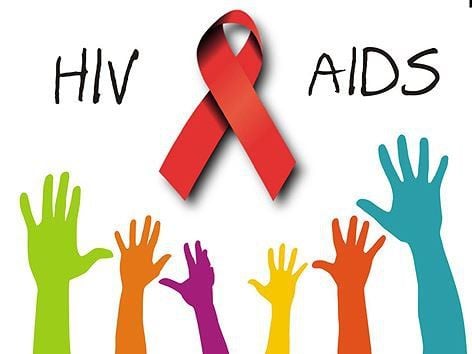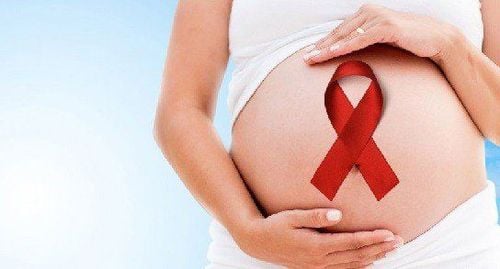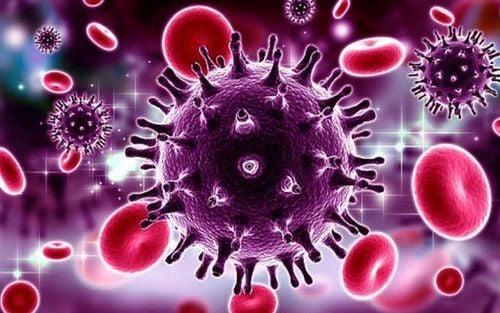This is an automatically translated article.
The article was professionally consulted by Specialist Doctor I Dang Thi Ngoc Chuong - Department of Pediatrics - Neonatology, Vinmec Central Park International General Hospital. He used to work at Children's Hospital I, Thu Duc Hospital and University of Medicine and Pharmacy Hospital in Ho Chi Minh City, with strengths in neonatal diagnosis and examination - neonatal resuscitation.Symptoms of HIV infection in children vary and vary by stage. The period without symptoms is called the prodromal phase. Symptomatic Stage - AIDS is the final stage of HIV infection. Clinical signs of HIV in children are different from those of adults and also depending on the route of infection is transmission from mother to child, blood or genital route, the manifestations will be different.
1. Signs of HIV in children above the prodromal stage
Children infected with HIV from their mothers after being born are normal, or have only signs of low birth weight; When the HIV virus enters the bloodstream, a child may have some of the same signs as other viral infections, such as low-grade fever, muscle aches, and no specific symptoms. Depending on the route of infection and the underlying disease, the symptoms of HIV infection in children will vary when it develops into the disease.
However, the interval from the prodromal period after HIV infection to clinical manifestation of the disease in children with mother-to-child transmission will be shorter than in children with blood-borne infections, and also shorter than in children with blood-borne infections. with adults.
2. Signs of HIV in children on clinical stage
Signs of HIV in children above the clinical stage are mainly manifestations of opportunistic infections and neoplasms. These clinical manifestations vary in many organs and are easily confused with other diseases.
2.1 Early manifestations of HIV infection in children Nonspecific symptoms of HIV infection in children include:
Enlarged lymph nodes; Hepatosplenomegaly; Weight loss; Prolonged fever; Chronic diarrhea; Oral Candida; Chronic eczema.
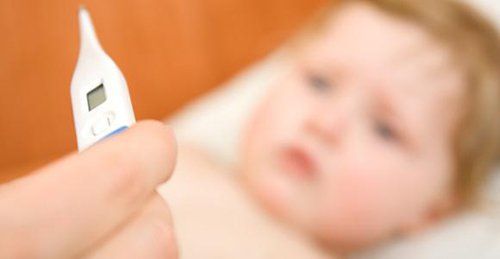
2.2 Signs of HIV in Children on Lungs Lung manifestations are common when children are infected with HIV/AIDS. In which, interstitial pneumonia with lymphocytic infiltrates is a common manifestation, with up to 30-50% of cases of HIV-infected children from mothers developing chronic lung disease. Signs of HIV in children on chest x-ray showed a nodular reticular infiltrate pattern.
The cause of lymphoid infiltrative interstitial pneumonia is unknown, but it may be due to a direct role of HIV or the Epstein-Barr virus. Although the lung expression of HIV in children on chest X-ray is abnormal, nothing can be heard in the lungs.
Differentiate between lymphoid infiltrative interstitial pneumonia and bacterial, viral or fungal pneumonia from Pneumocystis carinii pneumonia (PCP).
Pneumonia in children caused by Pneumocystis carinii is the most common opportunistic infection. However, no specific symptoms were detected on auscultation; Cytomegalovirus pneumonia is the second leading cause of respiratory failure, one of the hallmarks of HIV in children; In addition to viral lung infections, children infected with HIV/AIDS also have opportunistic bacterial infections, including pneumonia caused by Streptococcus pneumoniae, Haemophilus influenzae, and Staphylococcus aureus. Klebsiella; Infections caused by tuberculous bacilli and atypical Mycobacterium species are also common in children; Candidiasis is also one of the common signs of HIV in children. These lung infections are the main cause of death in children. 2.3 Signs of HIV in Children on the Digestive System Common signs for the digestive system when a child is infected with HIV are:
Diarrhea: It can last for weeks or months. Prolonged diarrhea causes dehydration and weight loss in children. Diarrhea is caused by intestinal agents such as E. coli, Shigella, Salmonella, Campylobacter, Entamoeba histolytica. In addition, the cause of diarrhea - one of the signs of HIV in children, can also be caused by Cryptoporida, Isospora belli, Candida, Strongyloides stercoralis; Difficulty swallowing: Difficulty swallowing is mainly caused by Candida infection in the mouth and esophagus. 2.4 Signs of HIV in Children on the Nervous System. Symptoms of HIV in children on the nervous system usually begin with:
Decreased intellectual functioning; Memory disorders; Movement disorders: failure, ataxia; Sensory disturbances; Abnormalities of muscle tone, cerebral palsy; Small brain in the first two years. Cerebrospinal fluid may be normal or slightly elevated in cells and proteins; Computed tomography can show brain atrophy with dilated ventricles, calcifications in the skull base, frontal lobes, and white matter lesions in the brain; HIV manifestations in children cause opportunistic infections of the brain - meninges: meningitis caused by tuberculosis, Cryptococcus, or by herpes viruses, cytomegalo. Toxoplasmosis may also be encountered, with the typical acute symptom of focal dyskinesia. Cryptococcal meningitis is considered a definitive diagnosis of AIDS, but it is rare. The neurological manifestations of HIV in children are quite high, most of which are caused by HIV itself, while others are caused by opportunistic infections and cancers. When encephalopathy is caused by HIV infection, the degree and progression of the disease varies, may be acute or subacute, progressing slowly over several years or months.
2.5 Signs of HIV in Children on the Skin Children HIV on the skin is very common with typical symptoms such as:
Zoster; Herpes virus infection;
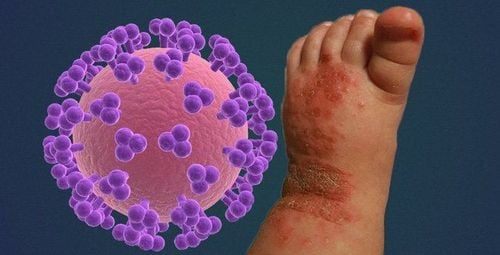
Candida in the mouth, anus and genitals; Impetigo, recurrent boils; Inflammation of the pores, papova virus infection causes mucinous tumors in the neck and body, itchy papules, leukoplakia at the edge of the tongue; Skin manifestations of HIV in children due to Kaposi's sarcoma are rare. 2.6 Other signs of HIV in children Systemic persistent lymphadenopathy: The disease occurs early in HIV infection with the clinical manifestation of enlarged lymph nodes (larger than 1 cm) and lasting for more than 3 months. Multiple lymph nodes are present in multiple lymph nodes, often in the groin, armpit, and elsewhere. The lymph nodes are firm and painless to palpation. Although lymphadenopathy is not of prognostic significance. On the contrary, when the disease is advanced, the lymph nodes become smaller and disappear. Therefore, seeing that the lymph nodes are enlarged and then small is a sign of severe prognosis. When the lymph nodes are smaller, there are signs of fever, weight loss, and prolonged diarrhea. These are symptoms of HIV infection in children progressing to full-blown AIDS. If the lymph node reappears, it may be the lymph node of tuberculosis, the lymph node of metastatic cancer, or the lymph node due to lymphoma.
Autoimmune diseases: The hallmark of HIV in children is the presence of many autoimmune diseases. These diseases reflect B-cell polyclonal activation and hypergammaglobulinemia. The most common is autoimmune thrombocytopenia, a disease that causes subcutaneous bleeding, most of which are detected with antiplatelet antibodies and immune complexes in the blood. Autoimmune hemolytic anemia with a positive Coombs test, requiring blood transfusion. Cardiovascular autoimmune disease, on pathology, showed symptoms of pericarditis with macrocytic mononucleosis, myocarditis, and endocarditis.
Opportunistic infections: Clinical manifestations of HIV in children are mainly opportunistic infections in many parts. In many cases, opportunistic infections are also an indicator of AIDS in children. Signs that HIV in children causes opportunistic infections include:
Good treatment for opportunistic infections reduces annual mortality.
Manifestations of cancer: Signs of HIV in children causing cancer including Kaposi's sarcoma and malignant lymphoma are very rare. Kaposi's sarcoma is an endothelial cancer of the skin, mucous membranes, viscera, and lymph nodes, which manifests as purple or pink-brown patches that appear anywhere on the body and gradually develop into tumors. . Kaposi's sarcoma is considered the defining symptom for AIDS. Lymphoma is more common in childhood cancers in general, mainly non-Hodgkin's lymphoma.
Symptoms of HIV infection in children are easily confused with many other diseases and vary depending on the route of transmission, as well as in other parts of the body. Therefore, it is best for your child to see a doctor to perform the most accurate HIV testing.
As a key area of Vinmec Health system, Pediatrics Department always brings satisfaction to customers and is highly appreciated by industry experts with:
Gathering a team of top doctors and nurses in Pediatrics : consists of leading experts with high professional qualifications (professors, associate professors, doctorates, masters), experienced, worked at major hospitals such as Bach Mai, 108.. Doctors All doctors are well-trained, professional, conscientious, knowledgeable about young psychology. In addition to domestic pediatric specialists, the Department of Pediatrics also has the participation of foreign experts (Japan, Singapore, Australia, USA) who are always pioneers in applying the latest and most effective treatment regimens. . Comprehensive services: In the field of Pediatrics, Vinmec provides a series of continuous medical examination and treatment services from Newborn to Pediatric and Vaccine,... according to international standards to help parents take care of their baby's health from birth to childhood. from birth to adulthood Specialized techniques: Vinmec has successfully deployed many specialized techniques to make the treatment of difficult diseases in Pediatrics more effective: neurosurgery - skull surgery, stem cell transplantation. blood in cancer treatment. Professional care: In addition to understanding children's psychology, Vinmec also pays special attention to the children's play space, helping them to have fun and get used to the hospital's environment, cooperate in treatment, improve the efficiency of medical treatment.
Please dial HOTLINE for more information or register for an appointment HERE. Download MyVinmec app to make appointments faster and to manage your bookings easily.






